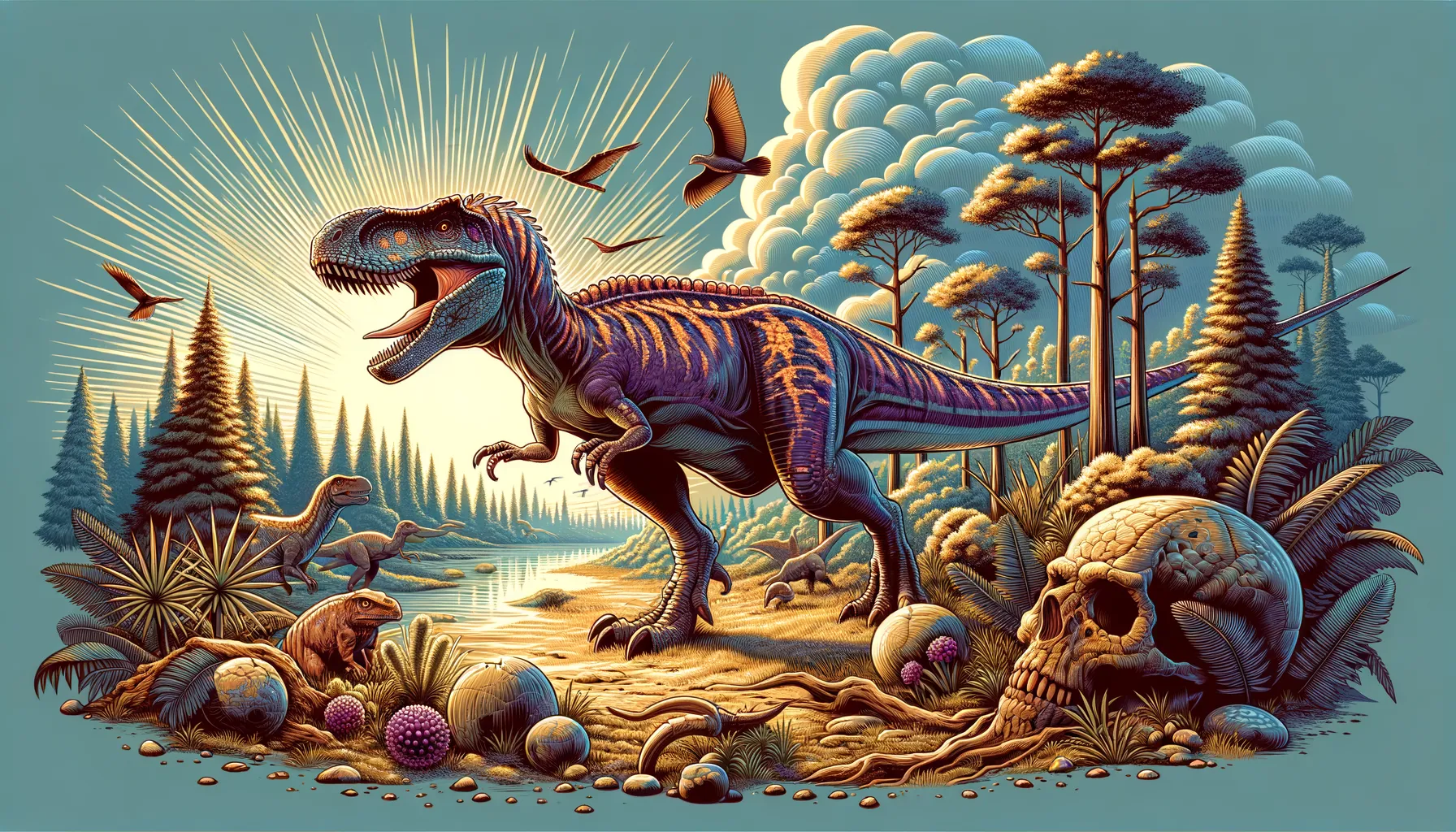
Laelaps
Swift predator from the Cretaceous wilds.
Period
Cretaceous
Length
Measured around 6-7 meters (20-23 feet) long.
Height
Stood about 1.5 meters (5 feet) tall at the hips.
Weight
Approximately 120-150 kg (265-330 lbs).
Laelaps, later renamed Dryptosaurus, was one of the first theropods discovered in North America and is known for its impressive speed and hunting capabilities. Originally thought to belong to a separate genus, further studies indicated that this dinosaur was a formidable predator. It lived during the Cretaceous period and roamed areas that are now part of the northeastern United States.
Diet
Laelaps was a carnivore. It primarily hunted other smaller dinosaurs and prehistoric animals. Its sharp teeth and claws allowed it to tear into the flesh of its prey efficiently.
Hunting
Laelaps utilized its speed and agility to pursue prey in forests and open plains. It may have employed opportunistic hunting strategies, ambushing or chasing down prey. Its sharp claws and teeth were essential tools for capturing and killing its targets.
Environmental challenges
Laelaps faced numerous environmental challenges, such as changes in climate and landscape, which affected the availability of prey. Competition with other predators would have influenced its hunting strategies and survival. The shifting Earth during the Cretaceous period also posed challenges in terms of the shifting availability of resources. Navigating through dense forests and open environments required adaptability and versatile hunting methods.
Speed
Highly agile and swift, likely able to chase prey with speed.
Lifespan
Estimated to live around 10 to 20 years.
First discovery
Discovered in the late 19th century by Edward Drinker Cope.
Fun Facts
- Laelaps was originally named by paleontologist Edward Drinker Cope in 1866, but the name was later changed to Dryptosaurus.
- The name Laelaps means 'hurricane' or 'storm wind' in Greek, which reflects its perceived agility and power.
- Laelaps was a theropod dinosaur, which means it was a bipedal carnivore, similar to the more famous Tyrannosaurus rex.
- The fossils of Laelaps were found in North America, adding to our understanding of Cretaceous predators in this region.
- Initially, Laelaps was confused with other theropods, highlighting the challenges paleontologists face in identifying fossilized remains.
- Because of its initial name change, Laelaps is an interesting case study in the history of dinosaur taxonomy.
Growth and Development
Like many dinosaurs, Laelaps likely hatched from eggs and underwent rapid growth in its early years to reach adulthood. Its development would have included the strengthening of its limb muscles to facilitate its trademark speed. As it matured, Laelaps would have needed to hone its hunting techniques and adapt to changes in prey availability. Its growth patterns could have been influenced by environmental factors and resource availability.
Habitat
Laelaps inhabited lush floodplains and forested regions rich in prey and vegetation. The landscape was composed of rivers, lakes, and diverse flora, contributing to a favorable ecosystem for both predator and prey. Seasonal changes could introduce varying conditions that Laelaps needed to adapt to for survival. The availability of water sources in these regions was vital for sustaining life and ensuring accessibility to prey.
Interaction with other species
Laelaps interacted with various herbivorous dinosaurs and preyed on smaller species in its ecosystem. It would have competed with other carnivorous dinosaurs for food and territory. This competition could have driven its evolution towards greater speed and hunting prowess. Cooperative behavior might have been rare, with the focus on individual survival and dominance within its range.
Natural lifespan
Laelaps possibly lived to about 10-20 years under natural conditions.
Reproduction
Laelaps likely laid eggs in secluded nests to protect its offspring from predators. Hatchlings depended on their parents or may have been independent early on, requiring high survival instincts. Reproductive success would have been linked to environmental stability and access to suitable nesting sites.
Social behaviour
Laelaps might have been a solitary hunter, focusing on stealth and agility. Occasional interactions with others of its kind could involve competition or mating. Its solitary nature would have minimized resource competition within its territory. Sparse social behaviour could also involve territorial disputes with rivals.
Fossil locations
Fossils of Laelaps have primarily been found in the eastern United States. The discovery of these remains has provided valuable information about Cretaceous ecosystems in this region. Frequent finds in New Jersey sites corroborate its existence in prehistoric North America. Ongoing excavations continue to illuminate its role as an apex predator of its time.
